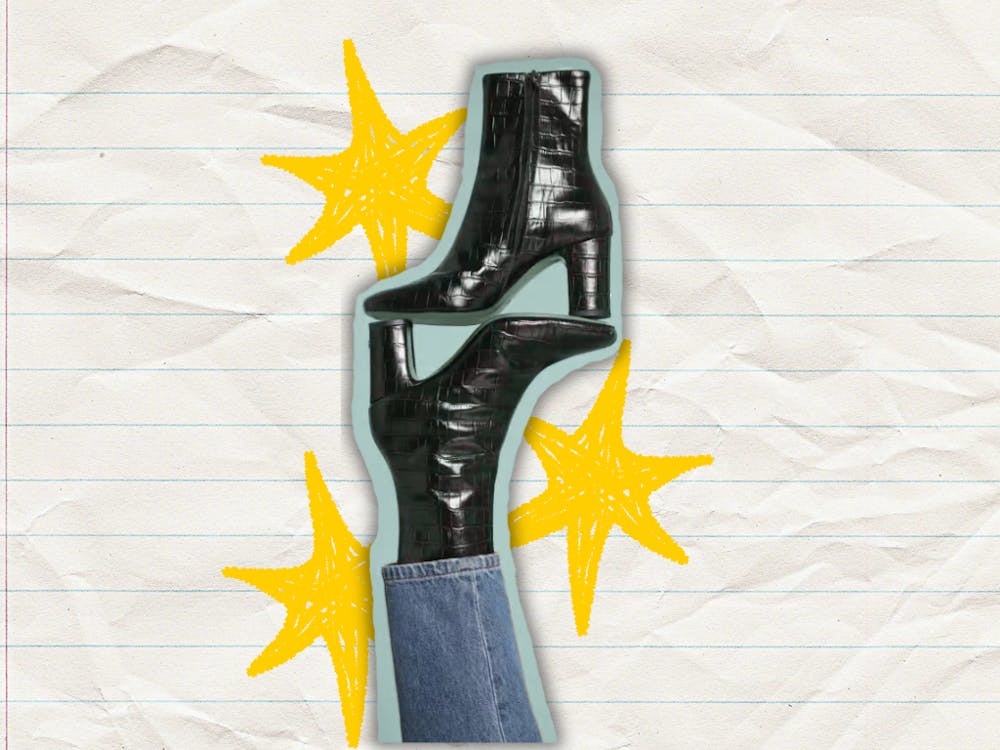Many American millennials can vividly remember their middle school selves walking into the synthetic-ridden, plastic emporium that was Forever 21.
The store was notoriously messy, clothes haphazardly thrown on racks and strewn across the cheaply tiled floor, a jean jacket randomly embroidered with the word tacos stuffed in between two seemingly-identical eyelet dresses of varying shades of white and ivory, apparently separate styles.
But hey, it was cheap.
Middle school students today will never be subject to the brand’s headache-inducing, and uncomfortably distinct smell of thousands of items of flimsy fabrics pumped full of synthetic dyes, stuffed into one cramped space, or the feeling of walking out of the store with an entirely new wardrobe, that yellow plastic monstrosity nearly filled to the brim.
Senior Julia Caroll remembers her Forever 21 excursions.
“It felt disorganized, and there were too many products,” Caroll said.
Senior Sydney Bailey, an English education major, who has spent time talking with high school students about conservation issues, agrees with Caroll’s sentiment.
“It was a good place for me to get quantity over quality, but as I'm getting older, I prefer quality all the way,” Bailey said.
On Sept. 29, 2019, Forever 21 filed for bankruptcy, ending the company’s 35-year reign as one of fast fashion’s first and most aggressive players.
And aggressive it was.
Caroll said it’s incredible how problematic — and normalized — producing copious amounts of stuff really is.
“It’s overwhelming because instead of shopping for timeless pieces of good quality, you feel like you need to buy a bunch of trending clothes, and a lot of the things you buy get worn once and hang out at the bottom of your closet,” Caroll said.
Enjoy what you're reading?
Signup for our newsletter
In 2017, Forever 21 hit its peak year of sales, maxing out at a staggering $4.4 billion.
According to Business Insider, “Forever 21's goal was to become an $8 billion company by 2017 and open 600 new stores in three years. But the company's aggressive expansion would also lead to its downfall.”
The company extended too far, too fast. And as other global brands like Zara and H&M continue to offer a similar, if not elevated, version of Forever 21’s “more model,” the word itself seems to be the name of the game.
More. More. More.
The idea of “too much” is inconceivable in the realm of fast fashion. As other companies surpass Forever 21’s quotas, there seems to be no slowing of fast fashion. A whole host of conglomerates are already filling Forever 21’s void.
Though these companies allow people the opportunity to afford trends at affordable prices, at what cost? And at whose expense?
Bailey, like many young adults, is frustrated with this pressure to “keep up” with the speed with which trends come and go.
Not only is she annoyed, but Bailey is also tired.
“Creating cheap clothing that people will throw away in a couple of months is an extremely wasteful thing to do,” she said.
Any discussion of making sustainability more accessible gets lost in the ease and sheer quantity — no, excess — of options.
“It is hard for people to resist the pressure to purchase fast fashion,” Caroll said. “It might not be realistic on a large scale for people to be sustainable in the way they shop unless fashion trends and advertising become more oriented towards sustainable shopping.”
Until sustainability — a word that in itself hinders, if not negates the notion of speed — becomes more enticing than sheer quantity, there seems to be no return from this fashion era of more.
Insta: @abspadgett



